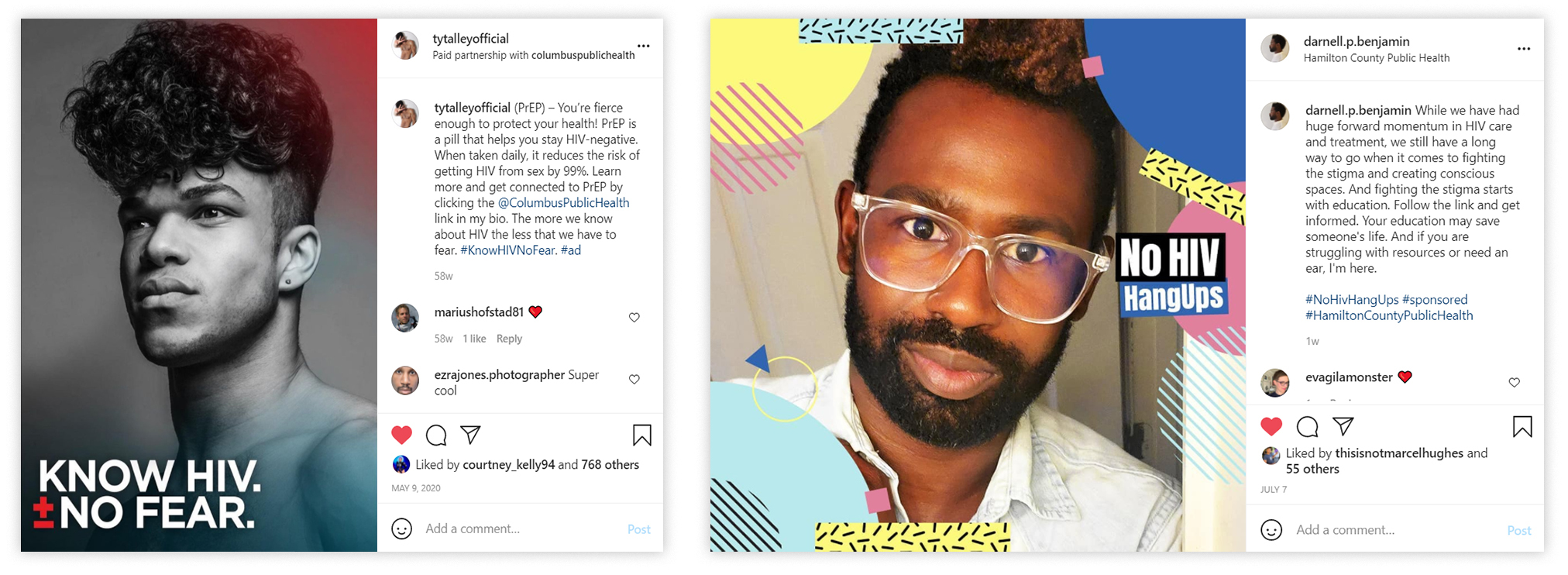

Contact Jen to learn about how we can deliver results for you.
The 2019 Edleman Trust Barometer report shows that among 18-34-year-olds, 63% trust what influencers say about brands much more than what brands say about themselves in their advertising. This is huge in the public sector, where behavior change is the name of the game.
Why? Believability. In social media channels, influencer marketing is like digital word-of-mouth marketing. And word-of-mouth has always been so trusted because it makes us feel like we’re getting honest advice from an authentic, reliable source. It’s human nature. We feel better about making some potentially life-changing behavior decisions when we hear about it from our peers and regular real-world people who share lived experiences and hold similar values.
But influencers aren’t exclusively hawking the latest trendy consumer gadget, fashion or food. They’re also promoting behavior change, public health, voting, the environment and supporting local economies.
Here’s a proven, effective plan to expand your organization’s toolkit with an influencer marketing program.
KW2 recently created influencer campaigns with the Columbus, Ohio Public Health Department and the Hamilton County, Ohio Public Health Department. Here’s how we did it, and why it worked.
Like any sound marketing strategy, the Columbus Know HIV, No Fear and the Hamilton County No HIV Hang Ups campaigns began with establishing goals. Theirs were to get more sexually active young men to influence and educate populations who are at higher risk of transmitting HIV about additional ways to test for HIV, encouraging them to order at-home tests so they could benefit from a healthier life.
It took time to work with influencers on hard topics that some may not feel comfortable sharing in public, but one by one, they ultimately loved the opportunity to become true advocates on issues in their community and helping the greater good. These influencers have continued to feel connected to and support the campaign even after their participation. More importantly, the results showed great success.
Our blueprint focused on five steps: finding influencers, filtering them, providing them tools, tracking and reporting.
Sure, there are tools out there driven by analytics that are designed to make it easier for communicators to find influencers. But in a world of algorithms, it takes people power to find and build relationships with authentic influencers. We quickly learned that digging for quality influencers, regular, trustworthy folks, required searching and scrolling one by one in each social media channel based on the influencer criteria we established.
When we began narrowing down the pool of potential influencers, we knew they needed to trust us first. So, we screened for authenticity, a desire to help, and their quantity of followers. This took phone calls, emails, texts and private social chats which built personal, authentic relationships that bypassed the algorithms. By talking to real people in real life, we could empower those who didn’t even think they could be influencers and make a change in their community. Yes, it took serious work to recruit over 100 influencers in Columbus, but the results show it was clearly worth it.
And since brand safety in the public sector is so important, especially in an age of unintended and deliberate misinformation, conspiracy theories and polarizing topics, we put extra time into vetting the content of potential influencers to ensure their values match the goals of the campaign. Here are some key watchouts and red flags we use when researching potential influencers.
With signed agreements from influencers in hand, they then needed the turnkey tools to achieve the goal: put approved messaging into their channels. “Toolkits” included background info and facts around the campaign, a glossary of terms and definitions, overall guidelines and ideas for creating their own posts and stories, as well as links, sample copy, hashtag recommendations, graphics and filters designed for each channel. We also provided several versions of branded posts that were created specifically for each channel, like this:

As influencers deployed messages into their channels, we began tracking engagement (likes, comments, sentiment and shares) and traffic to client landing pages using GTM tracking codes to track efficacy, traffic, and onsite actions. We then coached influencers, answered their questions during the campaign and provided encouragement along the way.
We provided monthly reports of influencer activity and successes, and a final campaign summary with all influencers’ results.
In Hamilton County, we saw a 90% increase in at-home tests being ordered since the campaign launched. And while an engagement rate of 1% is a success, in Columbus and Hamilton County, our engagement rates ranged from 7 to 9%.
Ultimately, by finding the right authentic influencers, and arming them with the right coaching and tools, we helped our clients feel more trusted and valued in their communities, which is helping them make the long-term positive impacts they were seeking.
Influencer marketing can play a fundamental role in public sector communications. It takes a lot of work. But it doesn’t mean paying big bucks to big names like we so frequently see in consumer goods influencer campaigns. It’s about creating a bench of authentic influencers who believe that real people our communities like them can stand for causes that are important.
KW2 can help you create a successful influencer campaign for your needs and budget. Want to learn more? Contact Jen.